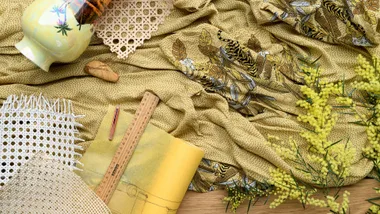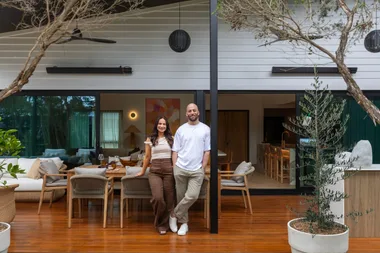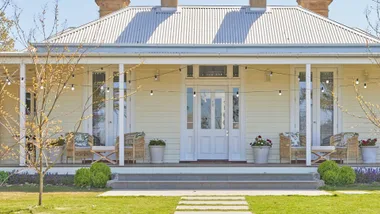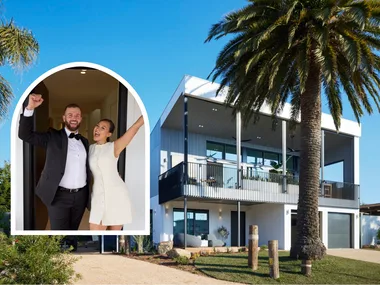Located on the tree-lined streets of a former Golf Links Estate, Jonathon and Alicia’s home sits in a historical enclave described by the National Trust as an “outstanding portrayal of the middle-class suburban ideal”. Built in Melbourne’s Camberwell in the late 1920s and ’30s, one century later the area still embodies similar virtues.
“It’s a really lovely leafy, green suburb,” says interior designer Martine Cooper. “It’s a very family friendly area with a lot of grand historical residences, great schools and a strong community.” Jonathon and Alicia, who live here with their two young children, have a longstanding connection to the area and wanted to preserve their home’s original features, blending them seamlessly with a contemporary extension.

Getting started
Martine started by taking an inventory of the period features that gave the home its distinctive character. “Knowing they loved the Art Deco style was our starting point,” she says. “I took note of features like the fan-shaped door handles in tarnished brass, the terrazzo floors in the bathrooms and portico, and the pink-toned leadlight windows.”
Using these details as inspiration, Martine chose shapes, colours and materials for the extension that are in sympathy with Art Deco style. “Trying to match decorative items, like cornicing and ceiling roses, can feel a little contrived,” she says. “However, we did repurpose original items if they made sense.” This sensitive approach has resulted in a beautiful balance and a contemporary home that offers an authentic nod to Art Deco architecture and interiors.

“Each space flows seamlessly into the next, creating a harmonious blend of classic and contemporary styles”
Martine Cooper, interior designer
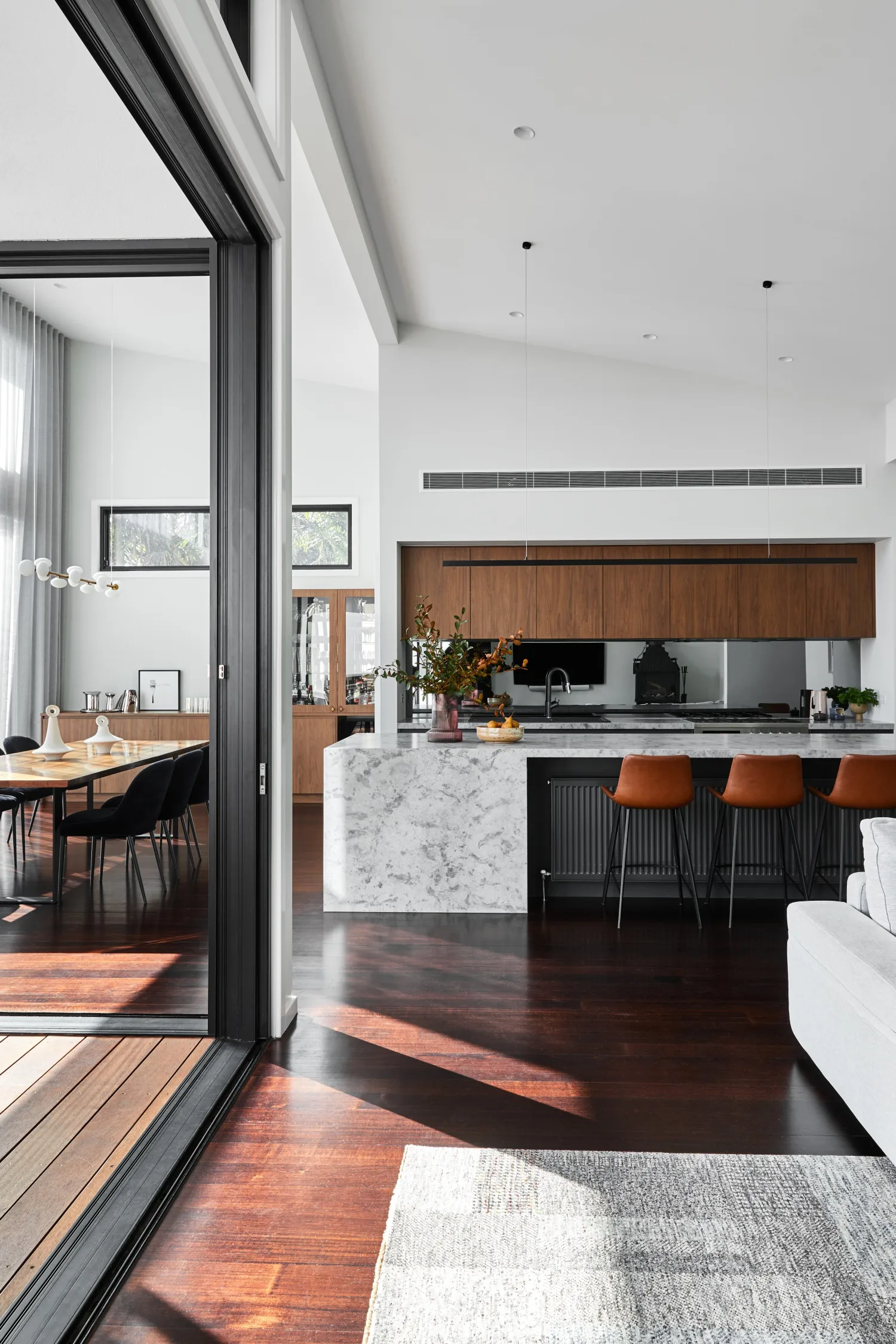
Mix your metals in fixtures and fittings
“Don’t be afraid to mix things up,” suggests Martine, “particularly in an Art Deco home where tapware, cabinetry and door handles are like the jewellery that brings an outfit together.” Choosing a mix of polished brass, gunmetal and chrome finishes can impart a modern look that takes its cues from the sleek symmetry of the 1920s and ’30s.
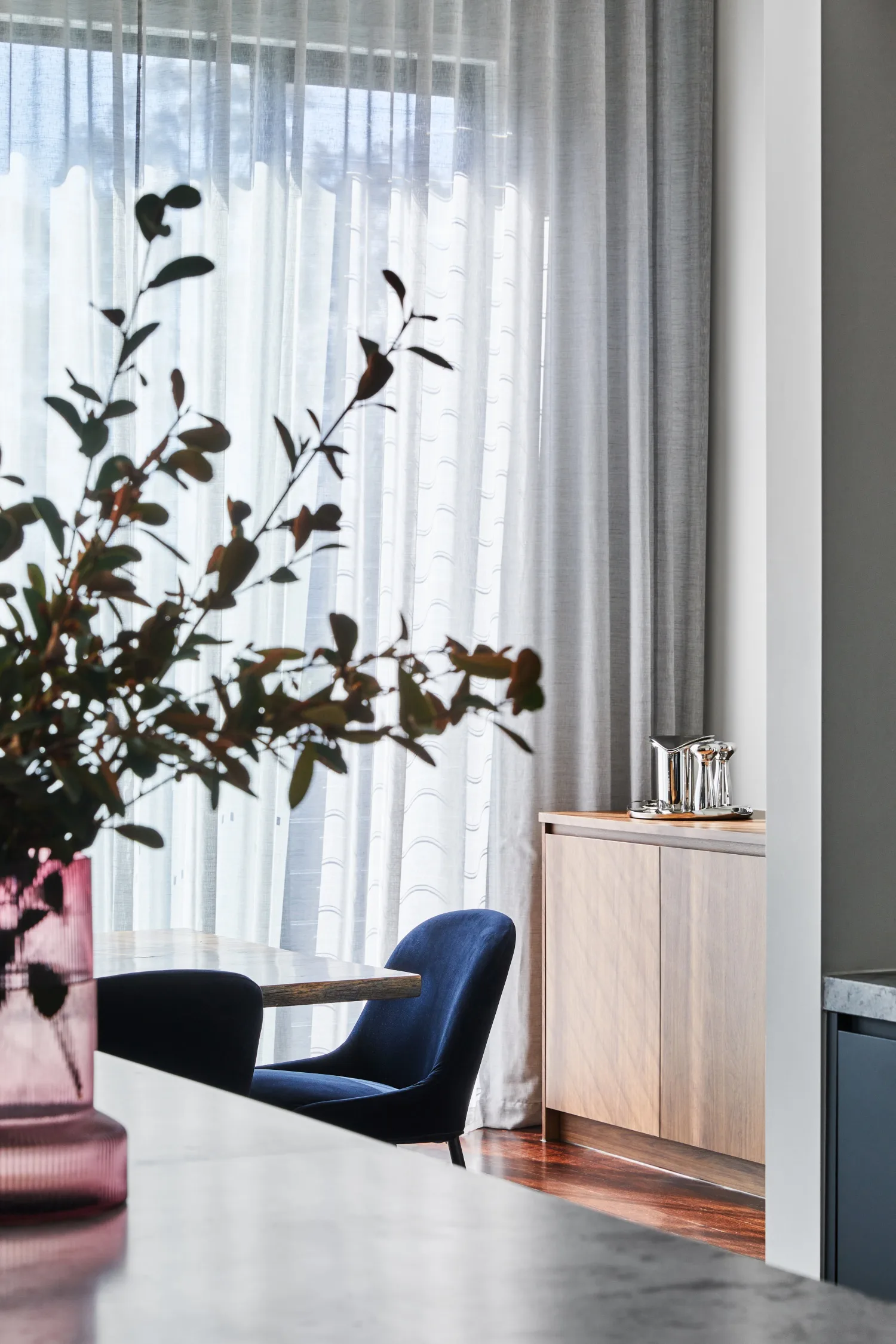
“I would avoid following the latest trends,” she warns. “Instead, lean into the period features of your home and be a little more adventurous in your material and colour selections.” Taking this sensitive approach will leave your interior with a harmonious look that transcends eras and trends.
Designer’s tip: Old homes need new storage
Before you start a heritage renovation, take a moment to consider your current and future storage needs. “Old homes tend to be a little short on storage,” says Martine, “so look for opportunities to incorporate clever solutions.” In the dining area, she included both open and closed storage, with the run of cupboards opposite the kitchen also serving as a display ledge.
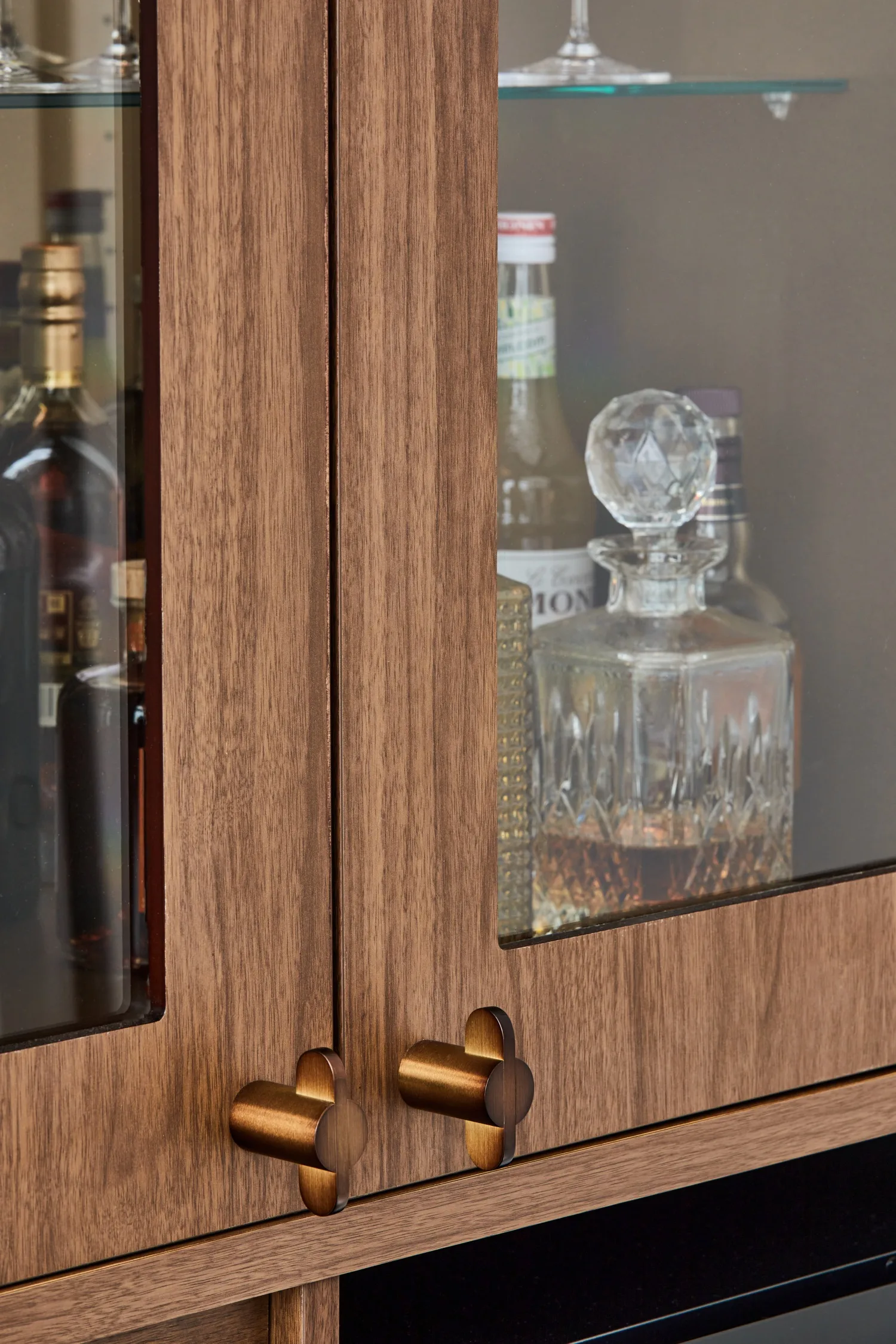
Take inspiration from original features
“Don’t try to reproduce the original,” says Martine. “Instead, create subtle connections between old and new.” In this home, the existing flooring was in excellent condition, so the builder sourced a similar hardwood for the extension and Martine chose a finish that would visually unite the two sections.
“We worked on a rich matte stain to create a beautiful grounding element throughout the whole home,” she says. “I also chose a mix of old and new feature lighting to create some more subtle connections.” An original ceiling light in the formal living room is accompanied by modern fittings in sympathetic shapes, including ‘Orb’ mirror sconces by Lighting Republic from Light Co in the ensuite, and a custom ‘Caterpillar’ light from About Space Lighting in the dining room.

“We included subtle nods to Art Deco throughout the home, without being too literal”
Martine Cooper, interior designer
Designer’s tip: Choose your team carefully
“Working with older buildings means you often uncover the unexpected,” says Martine. “It is essential to approach this type of renovation with open and honest communication, great problem-solving skills and innovative thinking.” Martine stresses the importance of selecting a great team of builders, tradespeople and designers who are open to collaboration and are dedicated to the end goal.
In this instance, working closely with Planned Homes meant despite COVID-related challenges, she was able to fulfil the brief in full and on time. “The owners wanted a light, bright home with a beautiful marriage between old and new, featuring all the modern conveniences for easy living.” And that’s what was delivered.
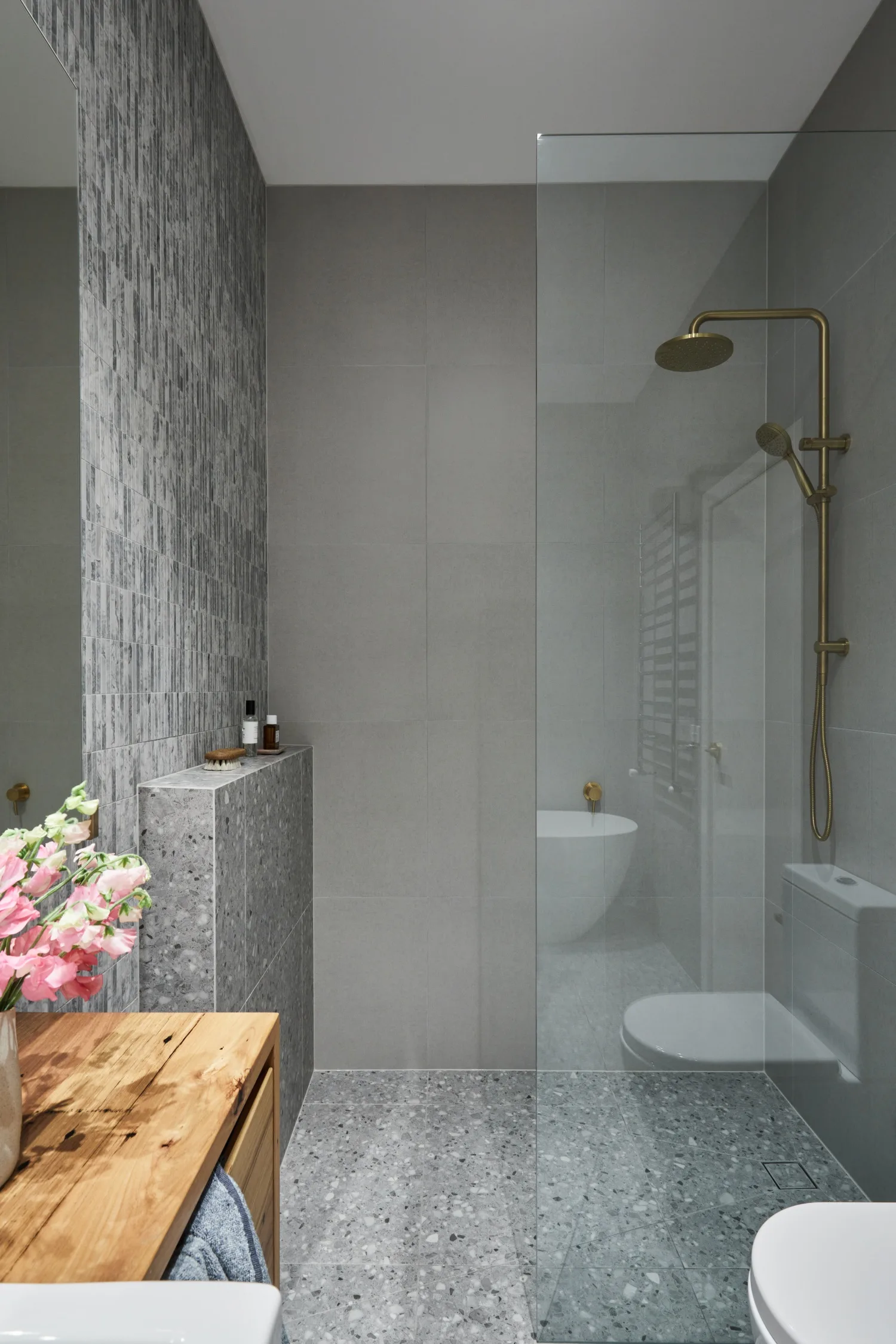
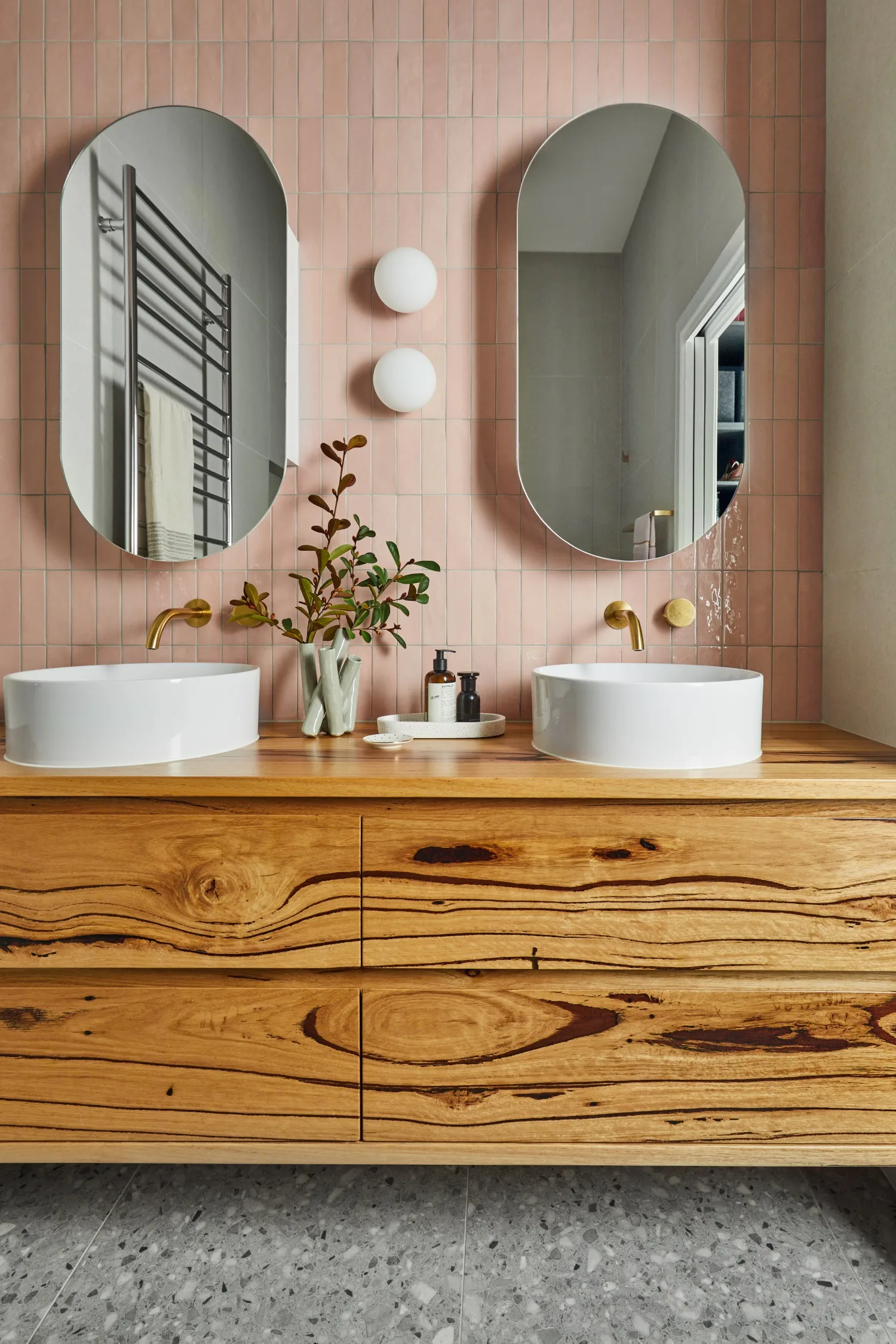
Design: Martine Cooper Interior Design, mcid.com.au @martinecooperinteriordesign
Build: Planned Homes, plannedhomes.com.au @plannedhomes
Source book

